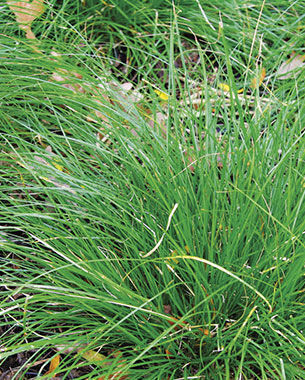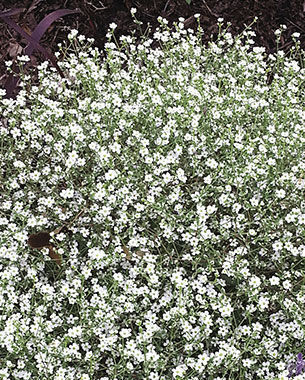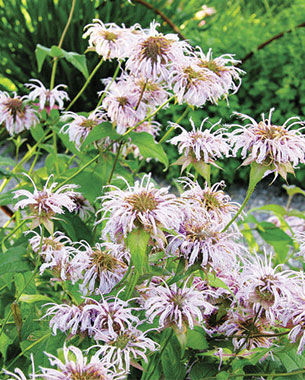Midwest

1. Rosy Sedge
Name: Carex rosea
Usda Hardiness Zones: 3 to 8
Size: 12 to 14 inches tall and wide
Conditions: Partial to full shade; moist, well-drained soil
Don’t let the beauty of our little native rosy sedge fool you. It is tougher than it looks and grows beautifully in dry shade, where very few perennials thrive. This plant has graceful, dark green, fine-textured foliage, though its common name comes from the diminutive flowers and seed clusters, which put on a little show in late spring. Rosy sedge is a cool season species, so the majority of its growth is in spring and fall. It spreads very slowly by rhizomes. Verdant green gives way to rich gold as cool autumn temperatures set in—a nice way to end the growing season. In spring, get out your mulching mower, set it to high, and mow down your sedges to rejuvenate them.

2. Prairie Baby’s Breath
Name: Euphorbia corollata
Zones: 3 to 9
Size: 18 to 36 inches tall and 12 to 18 inches wide
Conditions: Full sun; well-drained soil
The delicate-looking white flowers of this plant might fool you into thinking that it’s a prima donna, but nothing could be further from the truth. This native prairie species thrives in full sun, under the hot, dry conditions of summer, and blooms from late spring to early fall. Like other euphorbias, its milky white, toxic sap is a natural deterrent to deer and other leaf-eating animals. The blue-green summer foliage takes on gold to orange tones in late fall. This fine-textured perennial looks great planted among bold foliage, where its sprays of flowers pop against the solid backdrop.

3. Pale Purple Coneflower
Name: Echinacea pallida
Zones: 3 to 10
Size: 2 to 3 feet tall and 1 to 2 feet wide
Conditions: Full sun to partial shade; well-drained soil
If you’re tired of trying to sort out and find a decent performing cultivar of coneflower from the scores of them that have been flooding the market lately, then pale purple coneflower is for you. This native species requires little help from us to grow and flourish. It has a strong vertical habit and tucks nicely between other herbaceous perennials and grasses. Particularly beautiful are the graceful pink, shuttlecock-like flowers that sit atop slender stems and seem to levitate among neighboring plants during summer. It is especially healthy and happy in spots where its crown stays dry.

4. Eastern Bee Balm
Name: Monarda bradburiana
Zones: 4 to 8
Size: 1 to 2 feet tall and wide
Conditions: Full sun to partial shade; well-drained soil
Eastern bee balm has all of the great ornamental attributes of its more well-known cousins but without the powdery mildew and aggressive spreading nature. I often think twice about planting most bee balms, since they take so much work to keep in bounds, but this is a beautiful clump-former. This species puts on a show of light to medium pink flowers in late spring and is a favorite of hummingbirds and butterflies. Disease-resistant glossy, dark green foliage takes on rich burgundy tones in fall.

Photos: courtesy of Jeff Epping



















Comments
Log in or create an account to post a comment.
Sign up Log in